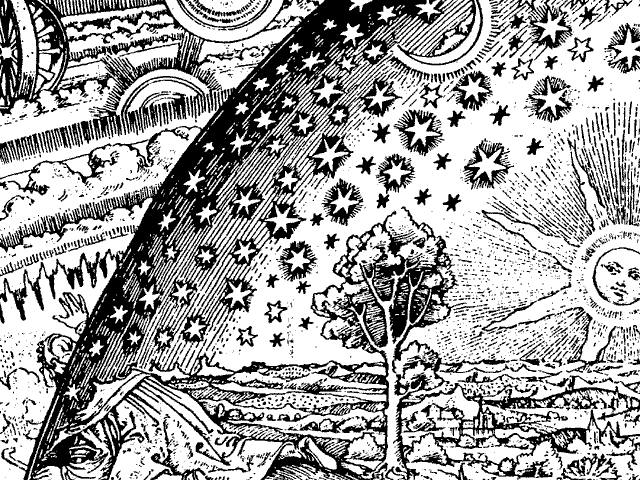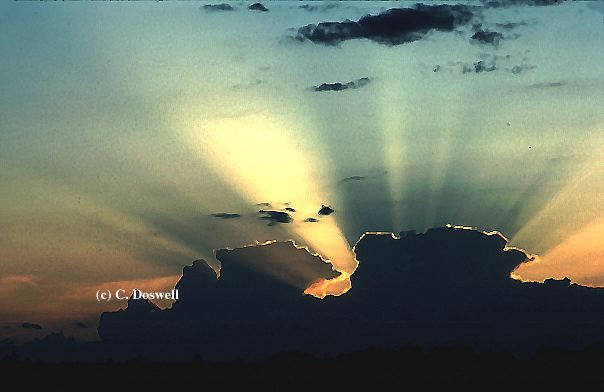I was in Milwaukee Wisconsin for the holidays last winter when the Polar Vortex struck the city. Awesome and brutal cold. It got down around minus 22 centigrade when I took these photos. I got up before sunrise, which was about 7:23, (December 29, 2013 - oops, the date might be off a day or two) and went to Big Bay Park, (actually in the suburb of Whitefish Bay) I walked down the bluff to the shore of Lake Michigan, and took a series of many photos as the sun rose. When the air gets that cold, there is something called the Lake Effect. http://en.wikipedia.org/wiki/Lake-effect_snow Moisture is picked up out of the water and the lake surface can be covered in wispy clouds.

I mostly shot into the sun, as the sun rose through a layer of clouds at the horizon, got some spectacular shots. One in particular though (actually a series of three bracketed shots at different exposures) is what I am posting here. I think they were taken at 7:55, about a half hour after sunrise, but could be a little off here. I am posting two versions here, one a tif from a single raw, run through lightroom, which shows the effect I have questions about, and an hdr version (which gives a little better impression of the whole scene, and looks cooler.)

Lots of cool clouds! From bottom, Lake effect mist, then on the horizon, a bank of clouds that might indicate the far shore of Lake Michigan, and then it gets a little complex. The interesting thing here is the shadow of the contrail (that's what I think it is, but it is dissipated, and the weather is quite strange) on the pillow like cloud. It appears at first glance that the contrail is beneath the pillow cloud and the shadow goes upwards. But I wondered about it, and did a little research. One of best things I found was this quoted from http://earthsky.org/todays-image/jet-contrail-casts-a-shadow and quoting Les Cowley.
I'd appreciate any clarification or comments. Thanks.
I mostly shot into the sun, as the sun rose through a layer of clouds at the horizon, got some spectacular shots. One in particular though (actually a series of three bracketed shots at different exposures) is what I am posting here. I think they were taken at 7:55, about a half hour after sunrise, but could be a little off here. I am posting two versions here, one a tif from a single raw, run through lightroom, which shows the effect I have questions about, and an hdr version (which gives a little better impression of the whole scene, and looks cooler.)
Lots of cool clouds! From bottom, Lake effect mist, then on the horizon, a bank of clouds that might indicate the far shore of Lake Michigan, and then it gets a little complex. The interesting thing here is the shadow of the contrail (that's what I think it is, but it is dissipated, and the weather is quite strange) on the pillow like cloud. It appears at first glance that the contrail is beneath the pillow cloud and the shadow goes upwards. But I wondered about it, and did a little research. One of best things I found was this quoted from http://earthsky.org/todays-image/jet-contrail-casts-a-shadow and quoting Les Cowley.
"he said: Contrail shadows sometimes appear counter-intuitive. [They may seem to be cast] by a low altitude bright light shining upwards and casting the contrail shadow on a higher cloud.
The reverse is the case …
In other words, he said, the jet itself and its contrail are always higher up than the shadow, which is cast on clouds below. By email, Les told me:
Contrail shadows often don’t look ‘right’ and seem as if the contrail is below the clouds. But the shadow casters – the sun and moon – always shine downwards so the shadow must be below the contrail.
Like all statements there is an exception! At sunset and sunrise rays can travel very slightly upwards to illuminate the underside of clouds. Under those circumstances however a contrail shadow would be a long way from the contrail."
Even though he grants an exception at the end for sunrise and sunset, my working assumption now is that the contrail is above the pillow like cloud, casting a volumetric shadow (sounds good, I read that somewhere) down and through the pillow cloud. I think I have a lovely large sized optical illusion here. (and something about parallax?) Two things to note, the contrail on the upper left hand corner of the image, appearing to pass over a cloud, and the slight dark band, between the bend in the contrail, and the pillow cloud. (and actually, I am calling it a pillow cloud,it looks like my pillow, but it might not fit the definition of a pillow cloud - what is it called?)Like all statements there is an exception! At sunset and sunrise rays can travel very slightly upwards to illuminate the underside of clouds. Under those circumstances however a contrail shadow would be a long way from the contrail."
I'd appreciate any clarification or comments. Thanks.
Last edited by a moderator:



